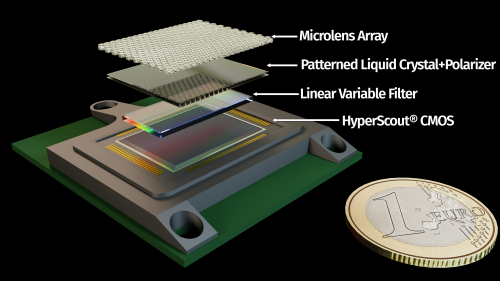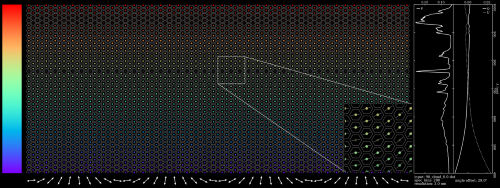LOUPE: Observing the Earth from the Moon to prepare for detecting life on Earth-like exoplanets
- 1Technical University Delft, Aerospace Engineering Faculty, Space Engineering (Astrodynamics and Space Missions), Delft, Netherlands (d.klindzic@tudelft.nl)
- 2Leiden Observatory, Leiden University, P.O. Box 9513, 2300 RA Leiden, The Netherlands
- 3cosine Remote Sensing, Oosteinde 36, 2361 HE Warmond, The Netherlands
LOUPE, the Lunar Observatory for Unresolved Polarimetry of the Earth, is a small, robust spectro-polarimeter for observing the Earth as if it were an exoplanet, designed to accompany any landing, roving or orbiting mission to the Moon. Detecting Earth-like planets in stellar habitable zones is one of the key challenges of modern exoplanetary science. Characterizing such planets and searching for traces of life requires the direct detection of their signals. LOUPE provides unique spectral flux and polarization data of sunlight reflected by Earth, the only planet known to harbour life. These data will be used to test numerical codes to predict signals of Earth-like exoplanets, to test algorithms that retrieve planet properties, and to fine-tune the design and observational strategies of future space observatories.
We present a novel spectropolarimetric instrument design: LOUPE, the Lunar Observatory for Unresolved Polarimetry of the Earth (Klindžić, 2020), which aims to observe the Earth from the Moon as if it were an exoplanet and perform spectropolarimetric measurements spanning the full range of phase angles. Various reasons make observing the Earth from the Moon or from a Lunar orbit, rather than a low Earth orbit, crucial to the experiment:
- The Moon is sufficiently far away to allow a spatially unresolved view of the whole Earth.
- For a lander on the Lunar surface, the Earth is always visible in a confined area in the sky.
- From the Moon, the Earth can be observed at all phase angles during a month.
- From the Moon, the Earth's daily rotation can be captured.
LOUPE’s science requirements include:
- Perform near-instantaneous (snapshot) spectropolarimetry of the entire Earth.
- Detect the presence of liquid water oceans and clouds.
- Derive and monitor atmospheric properties, e.g. via Rayleigh scattering, for potential climate research applications.
- Detect the O₂A band in flux and polarization and its variance with cloud cover, altitude and phase angle.
- Detect the Chlorophyll Green Bump and Vegetation Red Edge, the spectroscopic signature of plant life.
- Derive a map of continents from the disk-integrated signal and identify notable features, such as rainforests, deserts and ice caps.
LOUPE shall perform its science goals by recording and demodulating the disk-integrated Stokes vector of sunlight reflected from the Earth. The leading instrument design principle adopted for LOUPE is to create a compact, low-mass, low-volume, space-ready hyperspectropolarimeter with no moving parts. These constraints require creative solutions from the cutting edge of hyperspectral and polarimetric instrument design, where polarimeters traditionally used active rotating optics (temporal modulation) or beam-splitting (spatial modulation).
The latest LOUPE concept (Fig. 1.) utilizes Patterned Liquid Crystal (PLC) plates for encoding polarization information as a modulation orthogonal to the spectral flux measurement, enabling the linear-Stokes vector of a target to be recorded in one single “snapshot”, as shown in Fig. 2. Unlike a traditional rotating-retarder polarimeter, polarization is modulated in the cross-spectral direction, meaning polarimetry can be performed at full spectral resolution, which is not possible in the case of channeled spectropolarimetry with spectral modulation. This pioneering use of Patterned Liquid Crystals makes it possible to forgo the use of moving elements, resulting in a compact, space-ready instrument with versatile options of installation on a range of landing, roving and orbiting missions.
Here we discuss our detailed design process and the challenges involved in creating a unique space-qualified spectropolarimeter with no moving parts, whilst maintaining flexibility for different usage scenarios: rovers, landers, orbiters, and more. We present a performance trade-off, optical design informed by ray tracing with polarization effects, and the development of methods for spectral and polarimetric demodulation of simulated Earth observation data.

Figure 1: Tentative design of LOUPE.

Figure 2: Simulated LOUPE measurement. Wavelength filtering is applied in the y-direction, and polarization modulation in the x-direction. Each dot represents an unresolved image of the Earth.
How to cite: Klindžić, D., Stam, D., Snik, F., Keller, C., Pallichadath, V., van Dijk, C., Esposito, M., and van Dam, D.: LOUPE: Observing the Earth from the Moon to prepare for detecting life on Earth-like exoplanets, European Planetary Science Congress 2021, online, 13–24 Sep 2021, EPSC2021-657, https://doi.org/10.5194/epsc2021-657, 2021.

